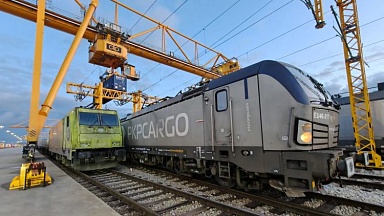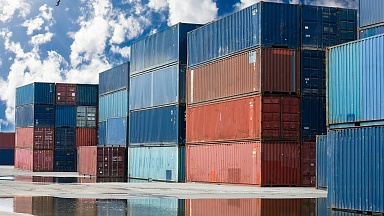Far East Land Bridge (FELB) has teamed up with European technology provider PEOPLE, the inventor of the container, to demonstrate new standards in green logistics. By using this container, the Eurasian operator reduced its ecological footprint.
Less weight, more cargo
How? First of all, it is in the weight of the container. This container is much lighter than the conventional container, and therefore more cargo can be transported in a single unit. According to the manufacturer, this results in 230 thousand more tons of cargo that can be moved by rail every year.
«In 2020, more than 168 million TEUs containers were moved around the world. By making them lighter by 250kg/TEU, we will be able to move 42 million tons of cargo annually without any additional cost and CO2 emissions,» explains Sotiris Ptochos, co-founder of PEOPLE.
No wood but recyclable lining
Moreover, instead of using wood for its internal lining, Container 2.0 uses 100 per cent recyclable material, with no change to a typical container production line. Its design uses 8.2 per cent less steel, making it more environmentally friendly.
FELB considers the use of this container a big step forward in its aim of doing green logistics. «With a variety of ecological and digital advantages, it was successfully used on the westbound route from Suzhou to Duisburg», outlines Dimitri Savytskyy, head of asset management at FELB Austria.
Track and trace
PEOPLE also developed smart devices that can be installed on the unit and an ecosystem that monitors all shipments and modes of transport in real-time from any corner of the globe.
«On the way to Duisburg, we could monitor the door status and many other parameters in real-time via the platform. This option leads to full visibility of CO2 emissions, the conditions of containers, and the status of current shipments. With the innovation of smart Container 2.0, we are a big step further in providing our clients sustainable service and an eco-friendly supply chain worldwide», points out Savytskyy.



